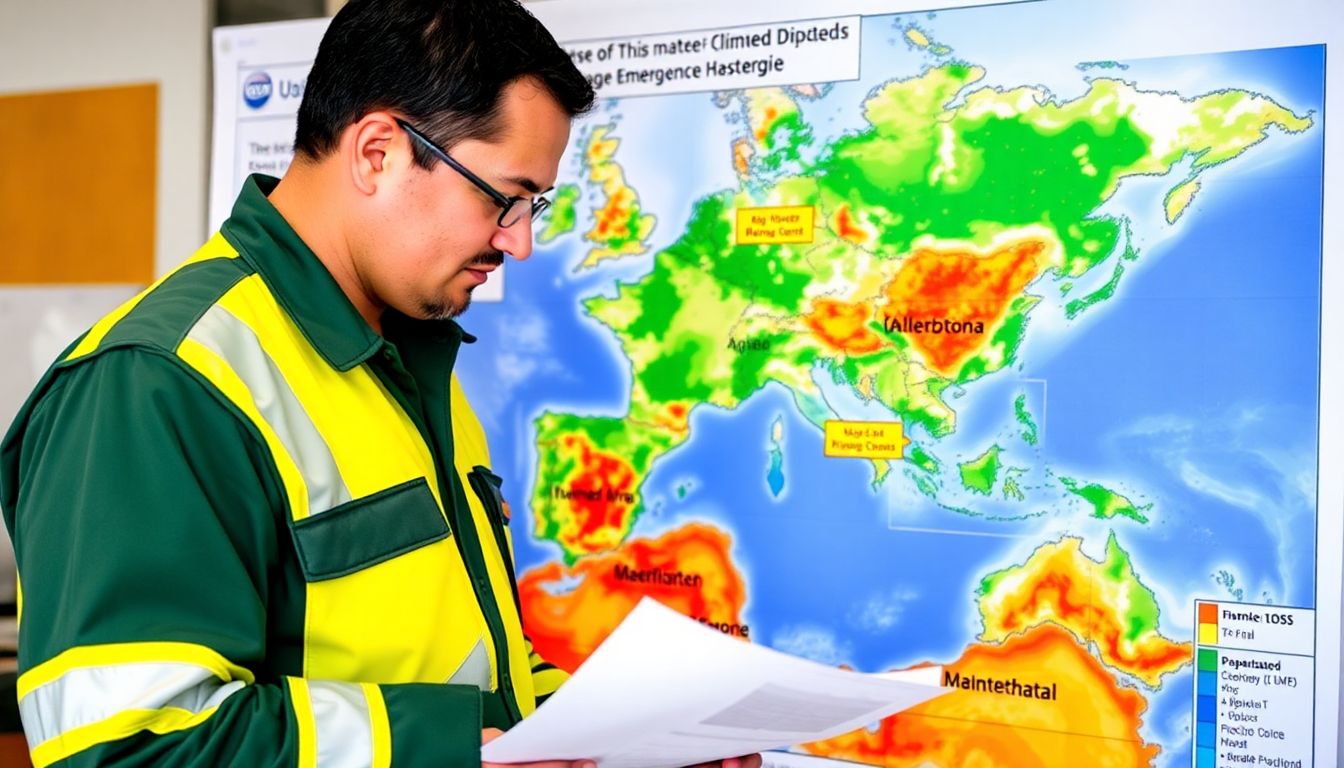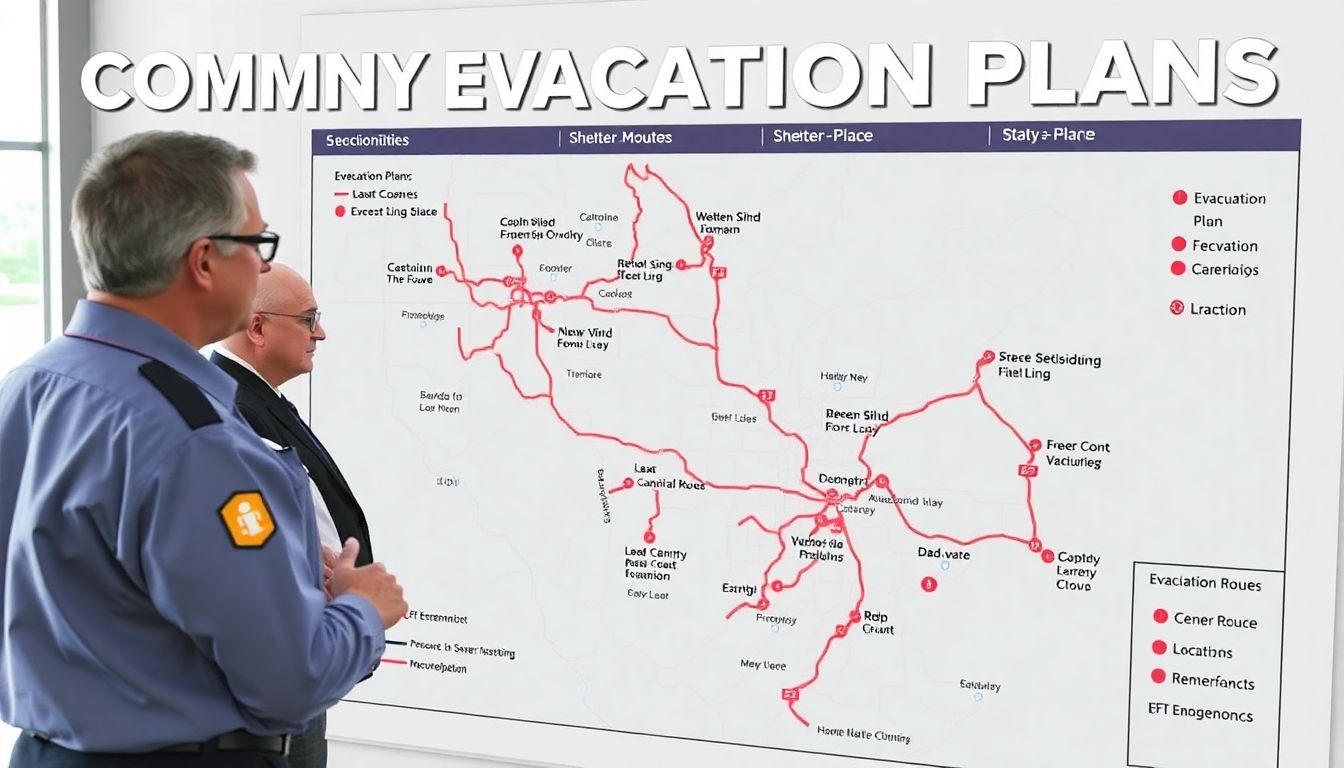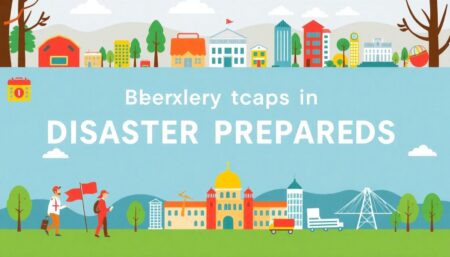Welcome to our comprehensive guide on FEMA’s planning resources! Whether you’re an emergency manager, a local official, or a community member, this article will walk you through the essential planning considerations and guides offered by FEMA. Let’s dive in and explore how these resources can help you prepare for and respond to various disasters effectively.
Discover the essential planning considerations and resources offered by FEMA to help communities prepare for and respond to disasters.
Imagine the hushed intensity of an emergency manager’s office, where every dusty corner is filled with the hum of quiet dedication. The manager, a sentinel of safety, is hunched over a desk littered with FEMA planning guides and resources, each page marked with the neon streaks of a highlighter. These aren’t just documents; they’re blueprints for resilience, roadmaps to navigating the unthinkable.
The manager’s hands, steady and sure, move from page to page, highlighting key sections with the precision of a cartographer mapping uncharted territories. Each stroke of the highlighter is a step forward in preparation, a silent vow to the community that they will be ready when the unexpected strikes.
Behind the desk, a digital map of the community flickers on a computer screen, a living canvas of streets, homes, and lives. It’s a reminder of the real-world impact of every plan and procedure, a visual tether connecting the pages of the planning guides to the heart of the community. This is where preparation meets reality, where the emergency manager’s meticulous work translates into safety and security for all.

Planning Considerations: Putting People First
In the dynamic field of emergency management, the significance of the ‘Planning Considerations: Putting People First’ guide cannot be overstated. This comprehensive resource, developed by the U.S. Department of Health and Human Services, serves as a critical tool for emergency managers to ensure that the needs of all community members are integrated into the planning process. By prioritizing people first, the guide promotes a shift from a one-size-fits-all approach to a more inclusive and equitable planning process.
The guide emphasizes the importance of understanding the diverse needs and capacities of community members. By encouraging emergency managers to engage with and involve the whole community in the planning process, the guide helps to identify and address potential disparities. This includes considering specific needs based on factors such as:
- Age and disability status
- Language barriers and cultural differences
- Socioeconomic status and access to resources
- Geographic location and infrastructure
Moreover, the ‘Planning Considerations: Putting People First’ guide provides practical steps and resources for emergency managers to implement this inclusive approach. It offers strategies for community engagement, data collection, and partnership building. By fostering collaborations between government agencies, non-profit organizations, and community leaders, the guide helps to create a more resilient and prepared community.
Perhaps one of the most valuable aspects of the guide is its emphasis on continuous improvement. Emergency management is not a stagnant field, and neither should be the planning process. The guide encourages regular evaluation and updating of plans based on feedback from the community and lessons learned from past events. This iterative process ensures that emergency plans remain relevant, effective, and truly reflective of the community’s needs. By embracing the principles outlined in the ‘Planning Considerations: Putting People First’ guide, emergency managers can transform their approach to planning, fostering communities that are more prepared, resilient, and united in the face of emergencies.

Climate Adaptation Planning: Guidance for Emergency Managers
Emergency managers are no strangers to the unpredictable nature of disasters, but with climate change fueling more frequent and severe weather events, the need for climate adaptation planning has never been more critical. This is where the ‘Climate Adaptation Planning: Guidance for Emergency Managers’ steps in, serving as a comprehensive roadmap for emergency managers to integrate climate adaptation into their planning efforts.
The guidance document, developed by the Federal Emergency Management Agency (FEMA), provides a structured approach to help emergency managers understand and prepare for climate-related hazards. It encourages a proactive stance, emphasizing the importance of
- Identifying climate hazards and assessing their potential impacts
- Conducting vulnerability assessments to understand community risks
- Developing and implementing climate adaptation strategies
One of the standout features of this guidance is its emphasis on collaboration and stakeholder engagement. It promotes working closely with community members, local organizations, and government agencies to ensure that adaptation plans are tailored to local needs and have broad support. By fostering these partnerships, emergency managers can gain access to valuable local knowledge and resources, leading to more effective and resilient planning.
The guidance also stresses the importance of continuous monitoring and updating of adaptation plans. Climate change is a dynamic process, and so too should be our response to it. Emergency managers must regularly review and update their plans to accommodate changes in climate science, community needs, and best practices. This iterative process ensures that adaptation efforts remain relevant and effective in the face of evolving climate risks.

Evacuation and Shelter-in-Place Planning
The ‘Evacuation and Shelter-in-Place’ guide serves as a critical resource for jurisdictions tasked with planning and executing protective actions during emergencies. This comprehensive guide outlines strategic measures to safeguard communities from various threats, ranging from natural disasters to human-made hazards. By providing clear, actionable steps, the guide empowers local authorities to make informed decisions that prioritize public safety and minimize risk.
One of the key aspects of the guide is its emphasis on preparedness. It underscores the importance of advance planning, including the identification of potential hazards, the establishment of evacuation routes, and the designation of shelter-in-place locations. By fostering a proactive approach, the guide helps jurisdictions to:
- Develop effective communication strategies to alert and inform the public
- Coordinate with neighboring jurisdictions and emergency services
- Ensure that critical infrastructure and resources are readily available
Moreover, the guide delves into the specifics of evacuation and shelter-in-place procedures. It offers detailed instructions on when and how to implement each protective action, taking into account the nature and severity of the emergency. For instance, evacuation is typically recommended when there is an imminent threat to life, such as a wildfire or a hazardous material spill. Conversely, shelter-in-place is advised when it is safer for individuals to remain indoors, as in the case of a chemical release or an active shooter situation.
The significance of the ‘Evacuation and Shelter-in-Place’ guide cannot be overstated. It serves as a vital tool for jurisdictions, enabling them to:
- Enhance their emergency response capabilities
- Build resilience within their communities
- Mitigate the impact of disasters
Ultimately, the guide plays a pivotal role in protecting lives and property, making it an indispensable resource for emergency management professionals.

Emergency Operation Plans for Houses of Worship and Schools
Emergency operation planning guides are crucial for houses of worship and schools, as they provide a structured approach to preparing for and responding to emergencies. These guides, often developed by government agencies and safety organizations, outline steps to mitigate risks, respond effectively, and recover swiftly from various crises. By following these guides, institutions can ensure the safety and well-being of their occupants, minimize damage, and maintain continuity of operations.
One key aspect of these guides is the emphasis on preparedness. For houses of worship and schools, this involves identifying potential hazards, assessing vulnerabilities, and developing comprehensive emergency plans. These plans typically include:
- Emergency contact information
- Evacuation procedures
- Shelter-in-place protocols
- Communication strategies
- Training and drills
By being proactive and having a well-rehearsed plan in place, institutions can significantly enhance their response capabilities and resilience.
Moreover, these guides stress the importance of collaboration and partnerships. Houses of worship and schools are encouraged to establish relationships with local emergency services, law enforcement, and public health agencies. This collaborative approach ensures that institutions have access to expert advice, resources, and support during emergencies.
- Joint training exercises
- Shared communication channels
- Mutual aid agreements
These partnerships foster a collective commitment to safety and security, amplifying the effectiveness of emergency response efforts.
Additionally, emergency operation planning guides emphasize the need for regular reviews and updates. Emergency plans should not be static documents; they must evolve to reflect changing risks, new best practices, and lessons learned from past incidents. Houses of worship and schools should periodically review their plans, update them as necessary, and conduct drills to ensure that everyone is familiar with the procedures and their roles in an emergency. This continuous improvement approach ensures that institutions are always prepared to face emerging threats and challenges.
FAQ
What is the purpose of the ‘Planning Considerations: Putting People First’ guide?
How does the ‘Climate Adaptation Planning: Guidance for Emergency Managers’ assist in emergency management?
What are the key considerations for evacuation and shelter-in-place planning?
- Identifying relevant concepts and principles for planning protective actions.
- Improving public messaging for evacuation and shelter-in-place.
- Providing clear protective action guidance for various hazards and building types.
Why is it important for houses of worship and schools to have emergency operation plans?
What resources does FEMA offer for comprehensive preparedness?
- CPG 101: Developing and Maintaining Emergency Operations Plans
- CPG 201: Threat and Hazard Identification and Risk Assessment (THIRA) and Stakeholder Preparedness Review (SPR) Guide
- CPG 502: Considerations for Fusion Center and Emergency Operations Center Coordination









